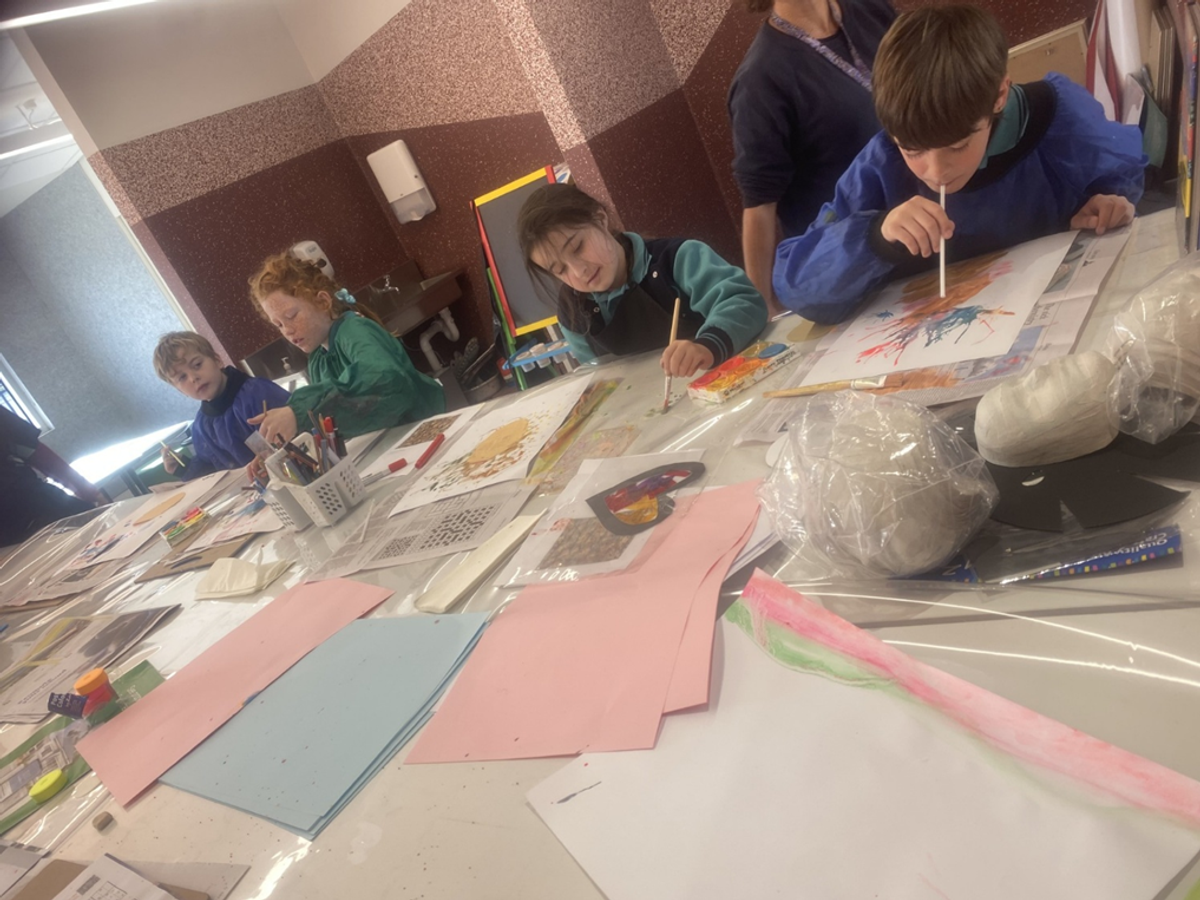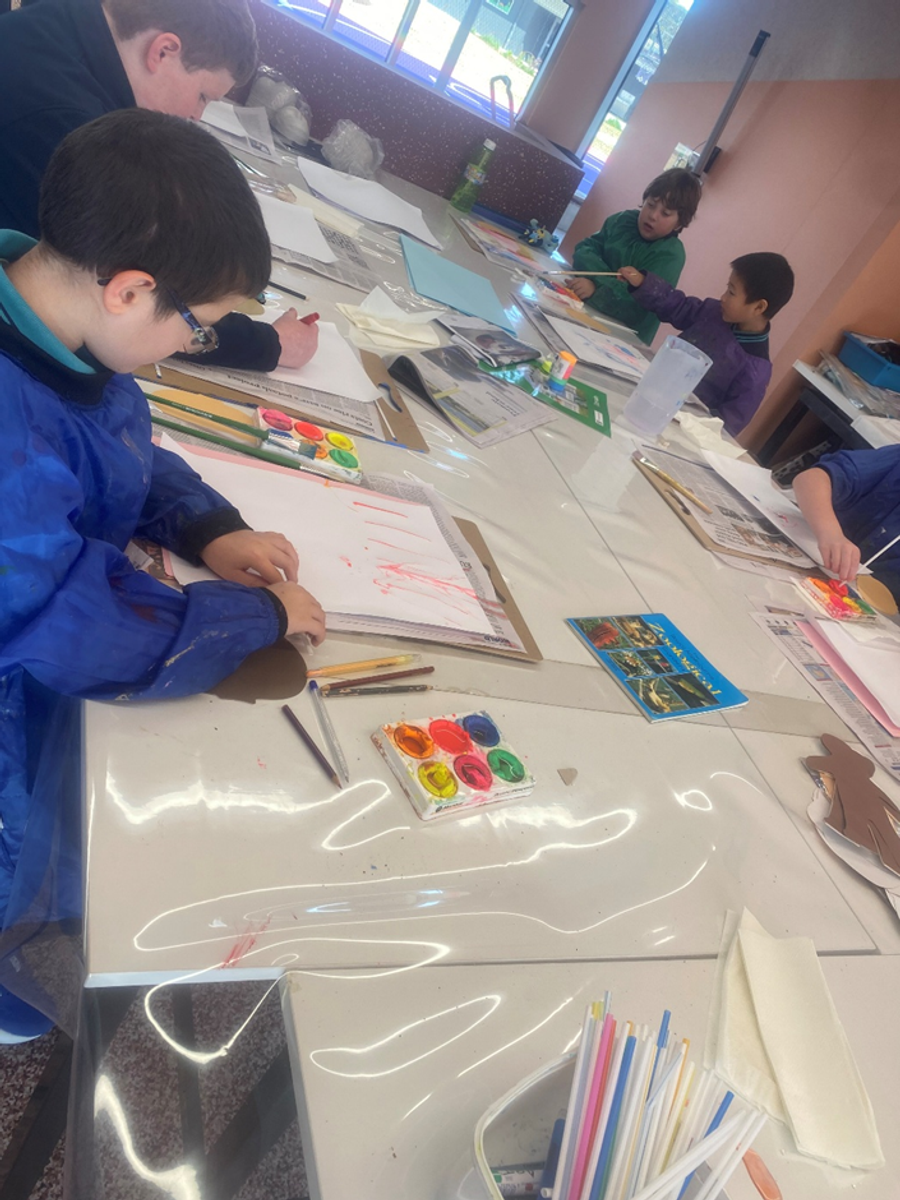ART

Ms. Malcom’s class recently began using the new art room, which is modern and well-equipped—an exciting space for creativity and exploration. Students were introduced to classroom rules and expectations before beginning their first major art unit.
Lesson Focus: Students explored the work and style of Jackson Pollock, a key figure in abstract expressionism. The lesson emphasized creativity, interpretation, and experimentation.
Lesson Steps:
- Introduction to Jackson Pollock & Abstract Expressionism
- I introduced students to Jackson Pollock and his unique drip painting technique.
- We viewed several examples of his work and discussed the visual elements and emotional impact.
- Students shared what they noticed about the paintings and described how they made them feel.
- We discussed the idea of abstract expressionism, focusing on how emotions and movement can be expressed without traditional shapes or subjects.
- Comparison with Other Artists
- We compared Pollock’s work with artists from different movements and styles, such as:
- Claude Monet (Impressionism) – soft, light-filled landscapes
- Pablo Picasso (Cubism) – geometric, fragmented portraits
- Frida Kahlo (Surrealism/Realism) – emotional self-portraits with symbolism
- Students discussed the differences in technique, subject matter, and emotional tone.
- We compared Pollock’s work with artists from different movements and styles, such as:
- Creative Activity: Blow-Paint Portraits
- Students began by drawing a simple head or portrait.
- Using watered-down paint and straws, they blew paint around the head to create expressive, abstract "hair" in the style of Pollock’s drip technique.
- This activity encouraged spontaneity, control through experimentation, and a personal connection to abstract art.
Learning Objectives:
- Understand key concepts of abstract expressionism
- Analyze and compare artistic styles across historical periods
- Apply expressive techniques in a hands-on creative project
- Develop personal artistic voice through experimental methods


